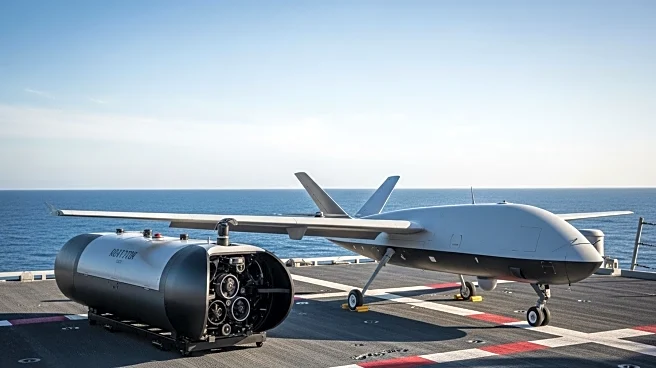What is the story about?
What's Happening?
The US Navy has successfully integrated a range of unmanned systems, including the Global Autonomous Reconnaissance Craft (GARC), into the multinational exercise UNITAS 25. This exercise, held aboard the USS Harry S Truman in Norfolk, Virginia, aimed to explore the challenges and benefits of incorporating autonomous and robotic systems into a hybrid fleet alongside manned platforms. Rear Admiral Carlos Sardiello, commander of US Naval Forces Southern Command/US 4th Fleet, highlighted the complexities involved in coordinating these systems, noting their low signature and potential conflicts with conventional platforms. The exercise provided valuable lessons for developing a hybrid fleet and emphasized the importance of leveraging autonomous technologies to complement traditional maritime power.
Why It's Important?
The integration of unmanned systems into naval operations represents a significant shift in military strategy, reflecting the evolving nature of conflict. By harnessing autonomous technologies, the US Navy aims to enhance its operational capabilities, allowing for faster decision-making and improved responsiveness to adversaries. This development could lead to more efficient and effective maritime operations, potentially reducing risks to personnel and increasing the strategic advantage of the US military. The successful integration of these systems may also influence future naval exercises and the broader adoption of autonomous technologies across other military branches.
What's Next?
Following the lessons learned from UNITAS 25, the US Navy plans to apply these insights to further develop its hybrid fleet capabilities. This involves refining the integration process of autonomous systems and addressing any conflicts with conventional platforms. The Navy will continue to explore how data from these systems can be processed to enhance decision-making speed and maintain a strategic edge over adversaries. Future exercises may focus on expanding the use of unmanned systems and exploring new technologies to further advance naval operations.
Beyond the Headlines
The integration of autonomous systems into military operations raises ethical and legal considerations, particularly regarding the decision-making processes of unmanned platforms. As these technologies become more prevalent, there will be increased scrutiny on their use in conflict scenarios and the potential implications for international law and warfare ethics. Additionally, the shift towards autonomous systems may impact naval personnel roles, requiring new training and skills to manage and operate these technologies effectively.
AI Generated Content
Do you find this article useful?

















